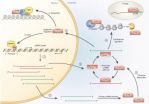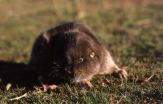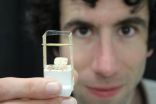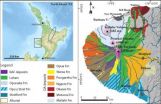(Press-News.org) In a recent study, a researcher at the University of Colorado Boulder found no evidence that a California ban on using hand-held cellphones while driving decreased the number of traffic accidents in the state in the first six months following the ban.
The findings, published in the journal Transportation Research Part A: Policy and Practice, are surprising given prior research that suggests driving while using a cellphone is risky. For example, past laboratory studies have shown that people who talk on a cellphone while using driving simulators are as impaired as people who are intoxicated.
"If it's really that dangerous, and if even just a fraction of people stop using their phones, we would expect to find some decrease in accidents," said Daniel Kaffine, an associate professor of economics at CU-Boulder and an author of the study. "But we didn't find any statistical evidence of a reduction."
California enacted its ban on hand-held cellphones on July 1, 2008. For the new study, Kaffine and his co-authors—Nicholas Burger of the RAND Corporation and Bob Yu of the Colorado School of Mines—looked at the number of daily accidents in the six months leading up to the law's enactment and compared that to the number of accidents in the six months following the ban.
They chose to look a relatively narrow window of time to reduce the number of other variables that might have an impact on accident rates, including the possible introduction of safer cars into the market, an economic recession that leads to a drop in overall driving, or other changes to state traffic laws.
The researchers also corrected their data to account for precipitation, which can cause more accidents; gas prices, which can affect how many vehicles are on the road; and other unobservable factors that may have influenced accidents.
The study was not designed to determine why accidents did not decrease, but there are several possible reasons, Kaffine said. One is that people switched from using hand-held devices to hands-free devices, such as ones with Bluetooth technology. Prior studies in the lab have suggested that both types of devices may be equally distracting.
It's also possible that people were not complying with the new law, though past studies suggest that cellphone use dropped in other states when bans were enacted.
The reason could also be that the type of people who would drive recklessly using a cellphone are generally prone to distracted driving and would potentially cause accidents by fiddling with things, such as CD players or GPS devices, if they weren't using their cellphones.
And finally, it's possible that past studies of the risk of using cellphones while driving overestimate the danger. Since many of these studies were done in the lab, it could be that people perform differently using a driving simulator than they do on a real road.
Determining which, if any, of these reasons may have led to the ineffectiveness of California's ban could lead to better cellphone policies in the future. For example, if the problem is just that compliance is low, then an increase in fines might be all that's necessary to decrease accidents.
"Disentangling these effects will be useful for policymakers in other states who are considering policies to address distracted driving," Kaffine said. "However, our results suggest that simply banning hand-held cellphone use may not produce the desired increase in traffic safety."
INFORMATION:
No evidence that California cellphone ban decreased accidents, says Colorado University Boulder researcher
2014-07-18
ELSE PRESS RELEASES FROM THIS DATE:
The differentially expressed genes in DRG that influence neural regeneration after SNI
2014-07-18
Slit-Robo GTPase-activating protein 3 contains a Rho GAP domain that regulates the activities of Rho family GTPases and affects actin polymerization, which influences dendrite elaboration, neurite outgrowth and axon guidance, contributing to neural regeneration. Anjie Lu, the Third Xiangya Hospital of Central South University, China and his team performed a microRNA microarray analysis and identified 23 microRNAs whose expression were significantly changed in rat dorsal root ganglia (DRG) after sciatic nerve injury (SNI). Bioinformatic analysis was used to determine microRNA-214 ...
The human δ2 glutamate receptor gene is not mutated in spinocerebellar ataxia patients
2014-07-18
Recent studies have demonstrated that glutamate receptor δ2 gene (GRID2) is closely related to cerebellar functions in mice. This gene is predominantly located in postsynaptic dendrites of parallel fiber–Purkinje cell synapses in the cerebellum and contains potential fragile sites within large introns. These fragile sites easily develop spontaneous mutation, which leads to Purkinje cell death, contributing to the manifestation of spinocerebellar ataxia in mice. The human GRID2 shares 90% homology with the orthologous mouse gene, and therefore it has become an important ...
PIWI proteins and piRNAs regulate genes in the germline and beyond
2014-07-18
Non-coding RNAs represent one of the most exciting aspects of current biomedical research. Non-coding RNAs include long non-coding RNAs (lncRNAs) which are generally longer than 200 nucleotides (nt) and small non-coding RNAs (sncRNAs) that are mostly 20-35 nt. Among sncRNAs, microRNAs (miRNAs) and small interfering RNAs (siRNAs) are commonly 21 nt in length, and both specifically bind to the AGO subfamily of the ARGONAUTE (AGO)/PIWI family proteins. PIWI-interacting RNAs (piRNAs), which are defined by their specific binding to the PIWI subfamily of AGO/PIWI family proteins, ...
'Support' cells in brain play important role in Down syndrome
2014-07-18
(SACRAMENTO, Calif.) – Researchers from UC Davis School of Medicine and Shriners Hospitals for Children – Northern California have identified a group of cells in the brain that they say plays an important role in the abnormal neuron development in Down syndrome. After developing a new model for studying the syndrome using patient-derived stem cells, the scientists also found that applying an inexpensive antibiotic to the cells appears to correct many abnormalities in the interaction between the cells and developing neurons.
The findings, which focused on support cells ...
Four new species of tuco-tucos identified from Bolivia
2014-07-18
Lincoln, Neb., July 18, 2014 -- A research team led by Scott Gardner of the University of Nebraska-Lincoln has identified four new species of Ctenomys, a genus of gopher-like mammal found throughout much of South America.
Commonly called tuco-tucos, the burrowing rodents range from 7 to 12 inches long and weigh less than a pound. They demonstrate the broad range of biological diversity in the lowlands and central valleys of Bolivia, where all four new species were found, Gardner said.
It is very rare to identify a new species of mammal, said Gardner, director of the H.W. ...
New material puts a twist in light
2014-07-18
Scientists at The Australian National University (ANU) have uncovered the secret to twisting light at will. It is the latest step in the development of photonics, the faster, more compact and less carbon-hungry successor to electronics.
A random find in the washing basket led the team to create the latest in a new breed of materials known as metamaterials. These artificial materials show extraordinary properties quite unlike natural materials.
"Our material can put a twist into light – that is, rotate its polarisation – orders of magnitude more strongly than natural materials," ...
In alcohol abusers, fish oil may reduce risk of neurodegeneration and ensuing dementia
2014-07-18
MAYWOOD, Ill-- Omega-3 fish oil might help protect against alcohol-related neurodamage and the risk of eventual dementia, according to a study published in the journal PLOS ONE.
Many human studies have shown that long-term alcohol abuse causes brain damage and increases the risk of dementia. The new study found that in brain cells exposed to high levels of alcohol, a fish oil compound protected against inflammation and neuronal cell death.
The study was conducted by Michael A. Collins, PhD, Edward J. Neafsey, PhD, and colleagues at Loyola University Chicago Stritch ...
Weight management program also reduces depression among black women
2014-07-18
DURHAM, N.C. -- An intervention program aimed at helping obese women maintain their weight without adding pounds also significantly reduced depression in nearly half the participants, according to a new study from Duke University.
The study was conducted with 185 low-income black women ages 25-44, each with a body mass index (BMI) of 25 to 35, who were receiving primary care at five community health centers in central North Carolina.
The program used software built by Duke researchers that personalized a weight-gain prevention intervention called the Shape Program for ...
Catastrophic debris avalanches -- a second volcanic hazard
2014-07-18
Boulder, Colo., USA – Volcanic hazards aren't limited to eruptions. Debris avalanche landslides can also cause a great deal of damage and loss of life. Stratovolcanoes, with their steep, conical shapes made up of lava and unconsolidated mixed materials, can reach a critical point of instability when they overgrow their flanks. This leads to partial collapse, and the product of this slope failure is a large-scale, rapid mass movement known as a catastrophic landslide or debris avalanche.
In a matter of minutes, a debris avalanche can drastically modify the shape and nature ...
Bowel cancer breakthrough may benefit thousands of patients
2014-07-18
Researchers at Queen's University have made a significant breakthrough that may benefit patients with bowel cancer.
Dr Sandra van Schaeybroeck and her team have discovered how two genes cause bowel cancer cells to become resistant to treatments used against the disease. The research, which was funded by Cancer Research UK, was published this month in the prestigious international journal Cell Reports.
The activity of the two genes, called MEK and MET, was uncovered when the researchers looked at all the different pathways and interactions taking place in bowel cancer ...




